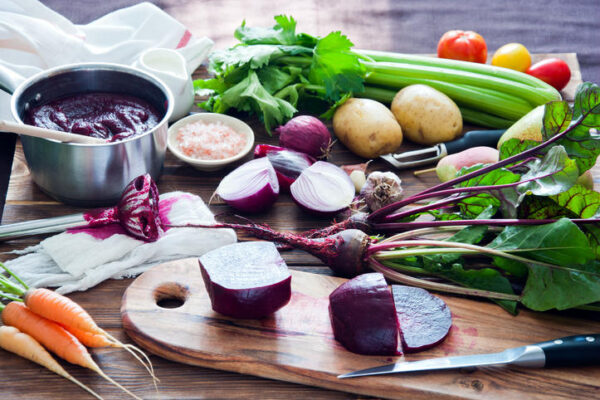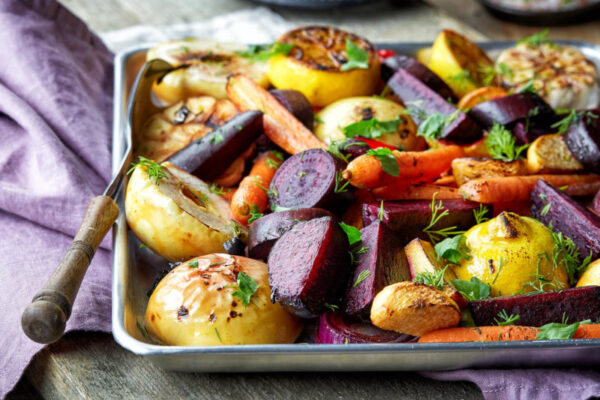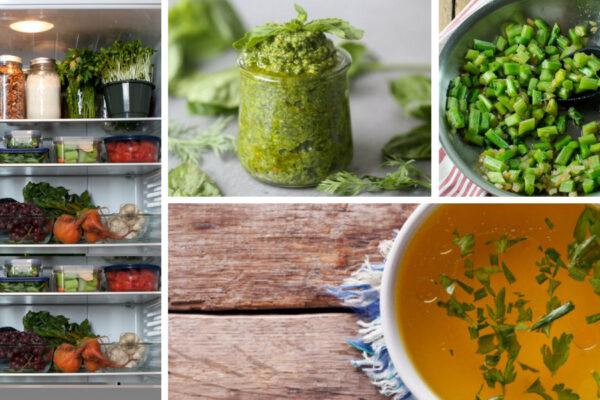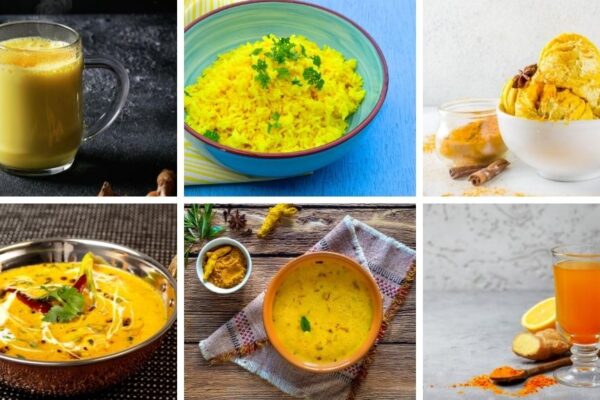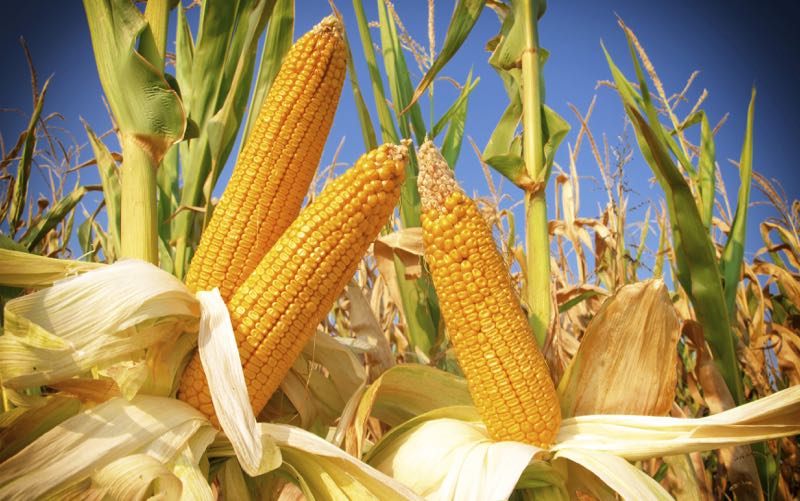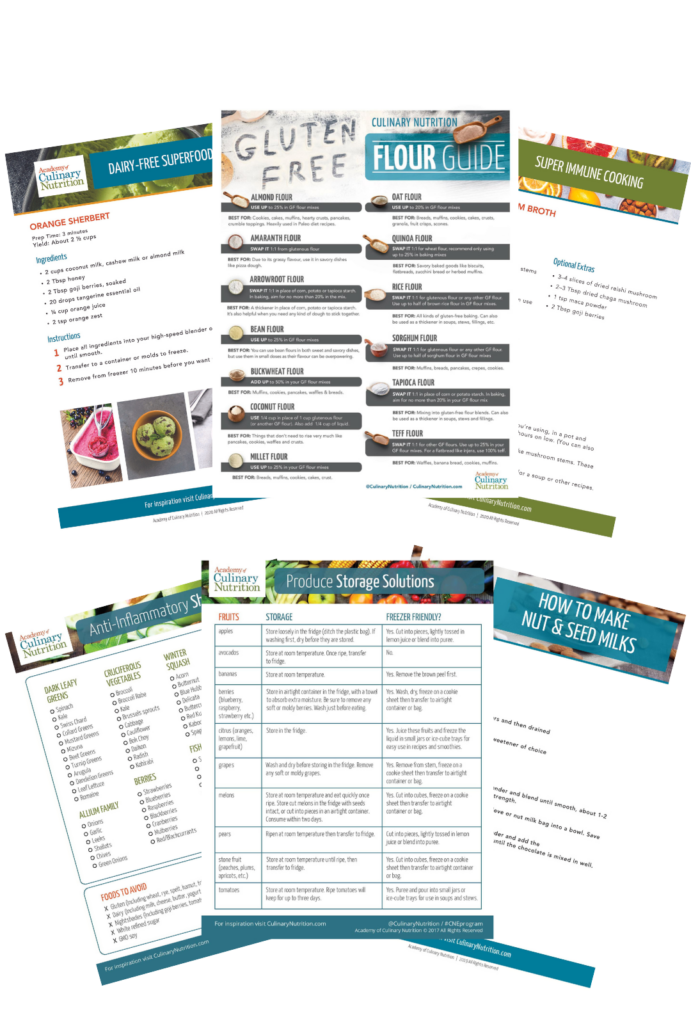How to Choose Healthy Packaged Foods

Longstanding nutrition advice tells us that we should stick to the perimeter of grocery stores (where the fresh food is) and avoid everything in the center aisles. Generally speaking, this is solid advice – but there are a number of healthy packaged foods throughout the grocery aisles we can use to supplement our home cooking.
Our culinary nutrition graduates around the world focus on teaching their communities how to cook simple meals, condiments and staples from scratch, along with tips and tricks like batch cooking or kitchen hacks to help you prepare meals quicker.
Sometimes, though, it can be extra challenging to make meals and work or school lunches without a little extra help, which is where carefully curating healthy packaged foods comes into play.
There are a number of reasons why someone might choose foods in packages, including:
- ingredient accessibility and availability
- food costs and budgeting
- mobility constraints or health issues that hinder from scratch cooking
- the desire to build or stock a pantry
- convenience during busy times
- travel or general portability when on the go
Let’s talk about healthy packaged foods, what to look for and what to avoid in the supermarket aisles.
Healthy Packaged Foods: Label Sleuthing Tips
Highly processed foods that don’t support our wellbeing far outweigh the options for healthy packaged foods. To ensure you’re selecting a product that is health-supportive and meets your nutrition goals, the first step is to start reading food labels.
While conventional nutritionists tend to emphasize calories or grams of fat, culinary nutrition wisdom is about looking at the ingredient lists on products to determine what is actually in the food we’re eating and if those ingredients are beneficial to our health and wellness. Skip the nutrition facts panel and look at the ingredients instead.
Some things to avoid when buying pre-packaged foods include:
- Bisphenol A (BPA). If purchasing canned goods or foods in plastic, look for cans and packaging that are BPA-free because BPA is a known endocrine disruptor. If a package doesn’t specifically state it’s BPA-free, it’s probably not.
- Artificial Food Dyes. Processing and packaging can suck the colour out of foods, and manufacturers add dyes to bring them back to life. These harmful additives are linked to cancer, hyperactivity, allergies and more.
- Preservatives. There are many additives that preserve food and we tend to avoid sulphites, nitrites, sodium benzoate, BHA and BHT.
- Canola And/Or Sunflower Oil. This is a common ingredient you’ll see on labels as canola oil is cheap, but it is also genetically modified and highly processed to the point where it is rancid. More on how to choose healthy cooking oils here.
- Trans Fats/Hydrogenated Oils. Our bodies can’t actually recognize the chemical structure of trans fats, and this can lead to things like high cholesterol, heart disease and cancer. Look for ‘hydrogenated’ or ‘partially hydrogenated’ oils in ingredient lists to detect trans fats.
- Refined Sugars. Sugars are habit-forming and can influence diabetes, mood disruption, hormone imbalances, cancer, cavities and cardiovascular disease. Sugar can present itself in many names, including sucrose, glucose, fructose, corn syrup, maltodextrin and more – get a list of other names for sugar here.
- Artificial Sweeteners. Promoted as a way to lose weight and balance blood sugar levels, artificial sweeteners have compromised our health, leading to weight gain, increasing our cancer risk, disrupting gut health, and damaging the liver, just to name a few. Skip aspartame, sucralose, sugar alcohols (xylitol, mannitol, sorbitol, etc.) and Acesulfame K. Learn more about alternative sweeteners here.
- Added Sugars. Sometimes sugar appears in places you wouldn’t expect, like tomato sauce, crackers, salad dressing or bread. Check labels for added sugars.
- Natural Flavours. “Natural flavours” is a broad term and they may be safe, or not. If you see natural flavours on a label, get in touch with the company to determine what they actually are.
- MSG. This flavour enhancer is found in many processed foods and may cause neurotoxicity, headaches, obesity, liver damage, allergic reactions and reproductive issues.
- Gluten and Dairy. As the Culinary Nutrition Expert Program is gluten-free and dairy-free, we avoid products that contain gluten and dairy.
When purchasing healthy packaged foods, look for:
- Simple ingredient lists. A short ingredient list doesn’t always mean a product is healthy, but generally limited ingredients means that you’ll be consuming fewer of the ingredients mentioned above.
- Whole ingredients. Look for whole, unprocessed ingredients. For example, look for whole, crushed, dried or chopped fruits and vegetables in packaged foods versus their powders, which have undergone far more processing and stripping of their nutrients.
- BPA-Free. Look for this label on canned or plastic goods. Glass jars are also a good option to avoid BPA.
- Non-GMO. Purchase packaged foods that aren’t made with genetically modified ingredients.
- Organic. This ensures there will be no synthetic pesticides, GMOs and fewer heavy metals, plus organic farming is better for animals and the environment. Note: organic doesn’t always equal healthy – organic cookies are still cookies!
- Wild. If purchasing canned fish, aim for wild options rather than farmed.
- Grass-fed. If purchasing animal products, we look for organic and grass-fed options.
- Low to moderate sodium. Salt is a very effective preservative, yet many packaged foods contain loads of white table salt, which is detrimental to our health. Look for healthy packaged foods that are low in sodium – you can always add better types of salt when you cook and serve your food.
Labels can definitely be confusing – more advice on how to avoid being fooled by the label here. You can find specific recommendations on what to look for in healthy packaged foods below!
Best Healthy Packaged Foods
Canned Fish
Sardines, salmon, anchovies and herring are some of our favourite anti-inflammatory, omega 3-rich fish. If you’re eating healthy on a budget, sardines are inexpensive and are fantastic in salads, on gluten-free toast or with roasted veggies. Find more canned fish recipes here.
Frozen Berries
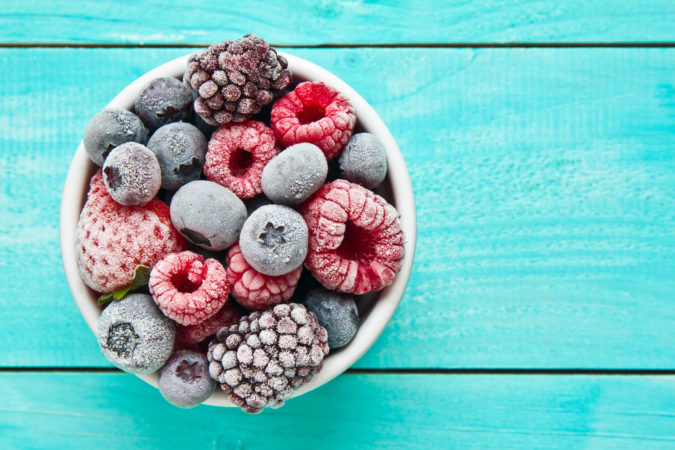
Berries are flash frozen at the peak of freshness when they are picked and are rich in fibre, antioxidants, and immune-supportive Vitamin C.
Plain Frozen Vegetables
Similar to fruits, frozen vegetables are frozen when they are fresh and are wonderful tossed into soups, dinner bowls and even smoothies.
Nuts and Seeds
Whether buying in bulk or in small packages, nuts and seeds are wonderful plant-based sources of protein and are rich in nutritious fats, vitamins and fibre.
Gluten-Free Grains
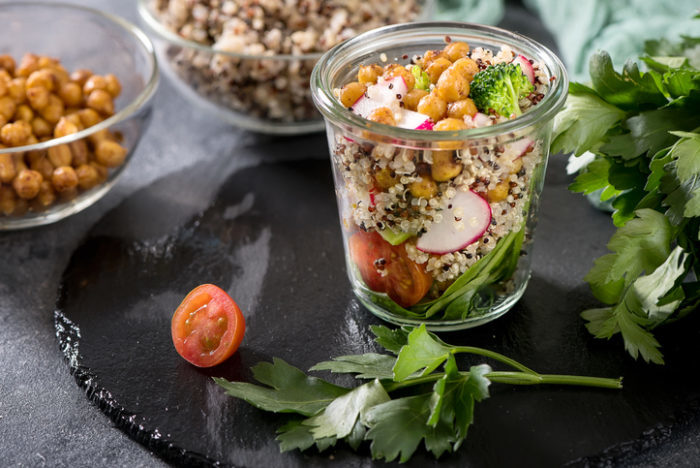
Plain gluten-free grains such as rice, wild rice, quinoa, millet, sorghum, teff and amaranth are perfect for side dishes, burritos, in stir-fries or other one-pot meals, or to bulk up veggie burgers. Learn how to optimally cook them (no more mushy grains!).
Oats
A morning staple, oats can be used to make both sweet and savory oatmeal, baked oatmeal, granola and gluten-free baked goodies. Plus you can use them to make oat milk.
Gluten-Free Pasta
Gluten-free pasta is an excellent pantry staple – when cooking with it, we like to use less pasta and load it up with nutrient-dense veggies.
Dried Fruit
Rich in fibre and great for digestion, dried fruits add oomph and flavour to baked goods, smoothie bowls, or can be used as a natural sweetener.
Beans – Canned and Dried
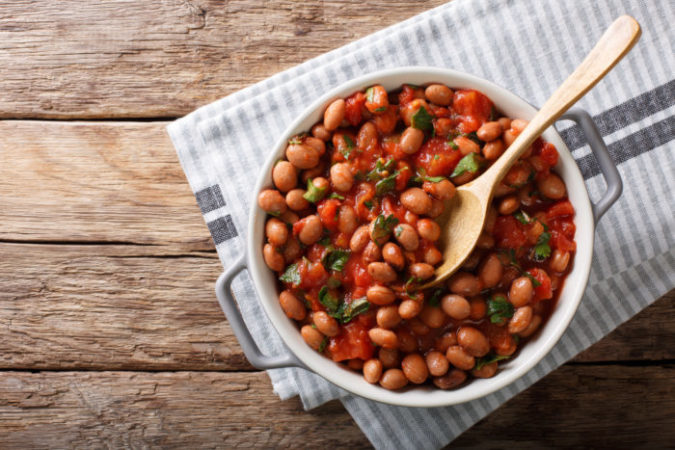
Beans and legumes are a wonderful way to add more fibre, vitamins and protein to your diet and they can be added to a wide range of dishes.
Tomatoes and Tomato Paste
Tomatoes are a good source of cancer-preventative lycopene and are a versatile kitchen ingredient, great in pasta sauce, on pizza, in salsa and other condiments, soups, or stews. Tomato paste adds a rich flavour and thickens up the texture of your dishes.
If you always end up wasting tomato paste, try this culinary hack to save it!
Dark Chocolate
When made with quality ingredients, chocolate can be a nutritious addition to your diet. It’s one of our favourite healthy pre-packaged foods!
Trail Mix
Often a combination of nuts, seeds, dried fruit and chocolate, trail mixes make a great snack when you’re on the go.
Nut/Seed Butters
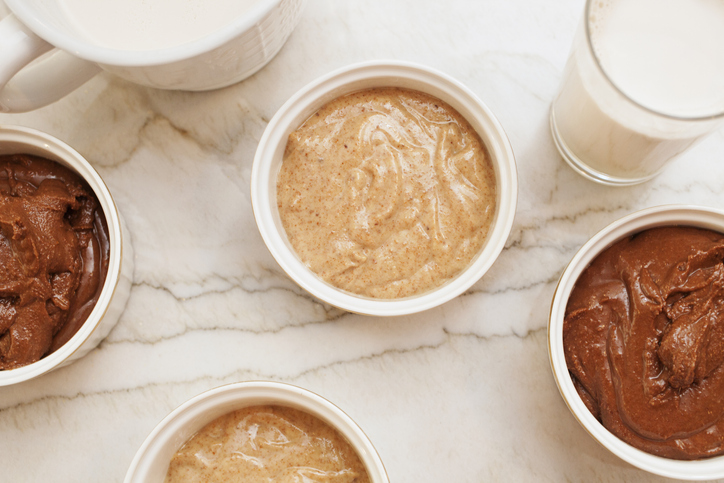
Aside from being supremely tasty, nut and seed butters are high in protein, essential fats, antioxidants and fibre. If you’d like to learn more about them and dip your toes into making your own, grab our guide to making and flavouring nut and seed butters at home.
Gluten-Free Flours
Perfect for gluten-free baking, bread, crackers, breakfast foods, thickening soups and stews, or dredging fish or other animal products, we love having a variety of gluten-free flours in the pantry. Get our Gluten-Free Flour Guide and Substitution Reference here.
Get your FREE Gluten-Free Flour Guide plus 35 more free resource guides!
Fill out the form below for instant access.
Free Resource Library
Enjoy more than 40 downloadable guides, recipes, and resources.
Dried Herbs/Spices
Dried herbs and spices are wonderful in a pinch when fresh isn’t available, or if you find yourself buying fresh herbs and not using them before they spoil.
Applesauce
Great as a snack or used as an egg substitute in baking, applesauce is a healthy packaged food that is rich in a variety of vitamins, minerals and fibre.
Coconut Milk and Shredded Coconut
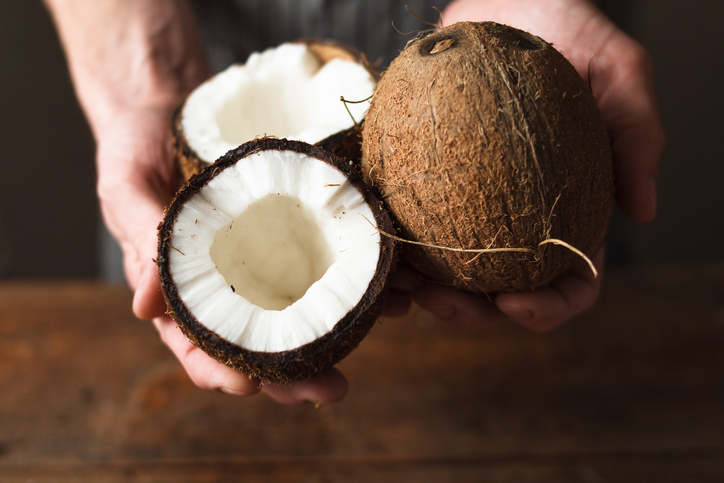
Coconut is anti-microbial and anti-bacterial, plus it contains medium-chain fats that balance blood sugar, fuel the nervous system and is easy for us to digest and use. Creamy coconut can swing both sweet and savory!
Salsa
Whether you opt for mild, medium or super spicy, salsa is a wonderful condiment for chips, veggies, or burrito bowls.
Soup
When you don’t have time to make a hot pot of soup, a high-quality store-bought variety can help you create an easy one pot meal – especially if you bulk it up with gluten-free grains, extra vegetables, or a source of protein.
Sauerkraut and Pickled Vegetables
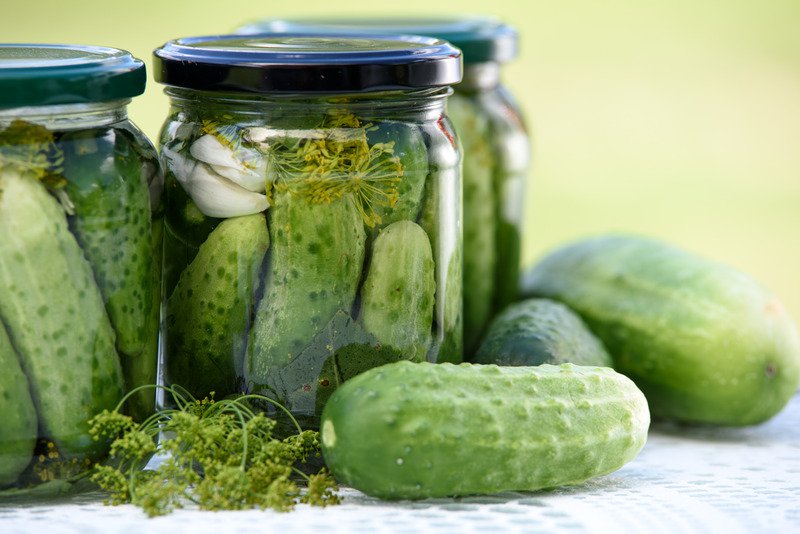
There is a difference between sauerkraut and pickles that have been fermented with a salt and water brine, and pickled foods that use a heated vinegar brine to create the sour flavour. We much prefer the former, for both the taste and the health benefits.
Olive Oil
Olive oil is a versatile oil in the kitchen – it can be used in everything from medium-temperature baking or roasting to stovetop cooking to condiments like salad dressings, dips and hummus.
Pasta Sauce
No time for simmering? Grab a jar of store-bought pasta sauce for pasta dishes, pizza, soups or stews.
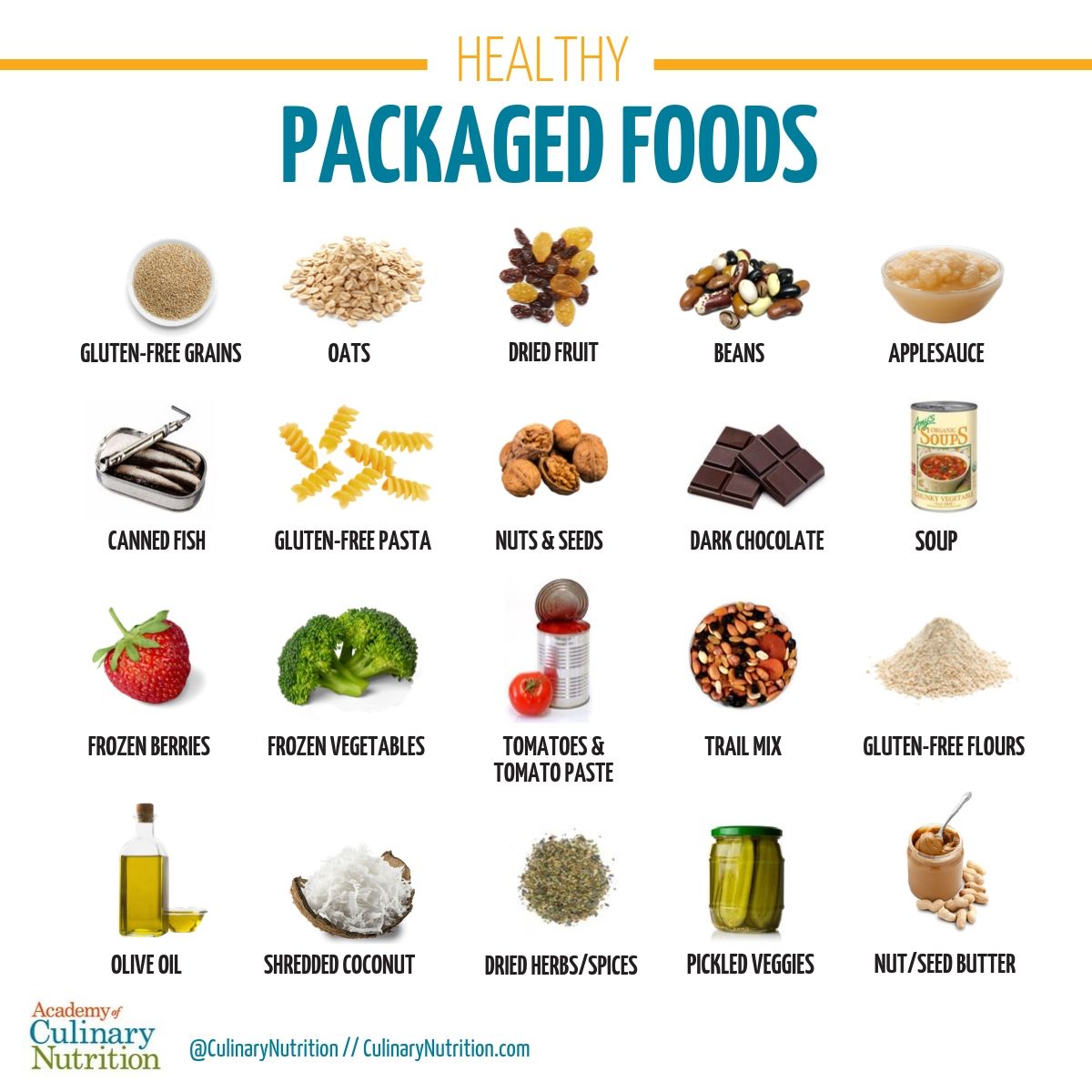
Free Resource Library
Enjoy more than 40 downloadable guides, recipes, and resources.















